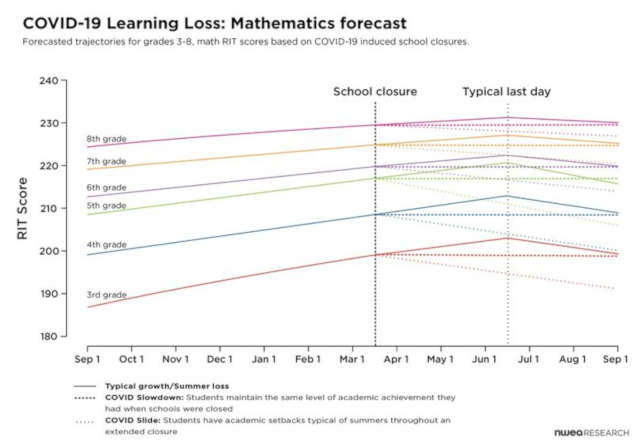Chula Vista
4368 Bonita Rd
, #101
Bonita, CA 91902
Bonita, CA 91902
Many students have been heavily impacted with school closures and the transition to home distance learning. Declining motivation and focus leading to insufficient study skills and poor retention of school material are among the most common effects that many students are experiencing; but many experts estimate more severe and longer term effects of school closures, and are calling this learning loss the COVID slide.
While cases vary by grade level, subject, and individual student, across the board students will have missed up to three months of the school year that they would have spent in a traditional classroom receiving enrichment and instruction, with mathematics more affected than any other subject. Even for students with teachers who have had a successful transition to home distance learning, there are still several weeks in between when students were last in school and when they started learning from home, in addition to home distance learning being less engaging and hands-on.
Data shows that students traditionally lose up to two months of their school year material during the summer vacation, but this year because of the COVID slide, students are projected to lose two to three times that amount of material by the time they return to school in the fall.
While the COVID slide will affect all students, it is also worth noting for parents that students who were already struggling or had pre-existing gaps from previous school years will be even more heavily impacted when school resumes, as their gaps and learning loss will compoud on one another, resulting in having a harder time on assignments, tests, and quizzes, as well as a drop in motivation and confidence because of how overwhelming and intimidating school material will be.
Students who were performing well at or above grade level are also projected to experience this blow to their confidence as well upon returning to school, as their learning loss will put them at a disadvantage for next year's curriculum as well, which is excpetionally true for middle and high school students whose math class each year builds upon the foundational and algebra skills covered the previous year.
For elementary schoolers, foundational skills like their whole number computation may suffer from being used less, which can affect more complex concepts like fractions, decimals, and long division, which are already a problem area for many students.
Optimizing your student's home distance learning by creating structure at home, and supplementing with outside resources now that many students have more free time at home without sports, clubs, or other extracurriculars can help ensure that your student isn't affected by the COVID slide this year. More than ever, students will need additional support and enrichment to excel next year, and prevent the COVID slide from affecting them from years to come.
For more tips on implementation of home distance learning, see our related blog at https://www.mathnasium.com/chulavista/news/tips-for-parents-adjusting-to-home-distance-learning.
Call us to learn more about Mathnasium @Home and find out if it is right for your students today at 619-946-5686.
